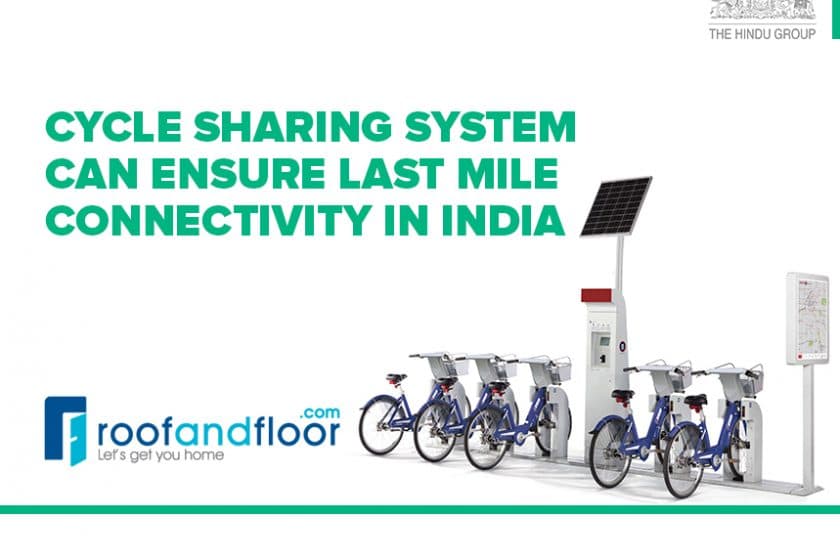
Last mile connectivity is an issue faced by urban India, especially people dependent on multiple public transport systems for their daily commute. Even as our cities are working to augment transport networks and expand rapid transit systems, providing affordable and convenient ‘last mile connectivity’ to public transport networks continues to be comparatively neglected.
Though walking becomes an inevitable last mile connectivity option, it comes with a disclaimer: ‘the local climate, physical condition and distance’. To overcome this, Indian cities are witnessing a strategic initiative to expand sustainable transport modes called ‘Cycle Sharing System’. Our metro cities including Delhi (Planet Green Bikes), Ahmedabad (MYBYK), Bangalore (Atcag), Mumbai (Cycle Chalao) are already experimenting with the concept. The Corporation of Chennai is also exploring the implementation of a successful cycle sharing system.
Cycle sharing is a public transport system in which people have access to cycles that can be used across a network of closely spaced stations. Cycle sharing originated as a concept in the 1960s. But it took years to catch on as it required better technology to provide real-time information about the scheme, tracking the bikes and safeguarding against theft and vandalism.
| 700 cities across the world have implemented this initiative |
| · Low cost & easy to implement |
| · Reduces traffic congestion and vehicle emissions |
| · Reduces demand for vehicle parking |
| · Hangzhou & Shanghai have the largest systems |
| · Paris, Copenhagen, Washington, NY are most successful |
At present in India, the top 20 Smart Cities have already embarked on various sustainable transport initiatives such as the construction of expanded footpaths on all arterial streets, implementation of pedestrian zones to facilitate access to commercial areas and cultural landmarks and IT-based on-street parking management system in their Smart City Mission proposals. Cycle sharing system is expected to enhance these efforts by helping the cities achieve their sustainable transportation goals.
Generally, this system is implemented in phase wise. The identification of the appropriate coverage area for each phase is best carried out by qualified planning bodies through surveying and statistical data analysis. Surveys are also the key to locate ideal cycle station spaces based on the locality, connectivity, intensity of public movement and space availability for the docks. Based on the survey results, the system size including the number of stations, number of cycles and corresponding number of docks in each station can be determined. The most successful systems have 2-2.5 docks for each cycle.
The cycle station locations are highly dependent on the actual local environment. Stations are mainly located around the core city areas covering all the public and recreation spaces, public transport hubs, malls, cultural landmarks, academic institutions, government offices, market areas etc. The variety of options for ideal station spaces include wide pavements, space between landscaped areas, areas beneath flyovers and bridges, space adjacent to bus stops, on-street parking spaces etc.
The features of Cycle Sharing System include:
- Dense network of stations across the coverage area, with spacing of approximately 300m between stations
- Fully automated system to check cycles in or out avoiding the need for manual monitoring at the stations
- Radio frequency identification devices (RFIDs) to track the cycles
- Real-time monitoring of station occupancy rates through GPRS facilitating the redistribution of cycles
- Advertising space on cycles and at stations (provides revenue generation options for system operator/ Corporation)
- Pricing structures will be finalized in such a way that it encourages short trips, helping to maximize the number of trips per cycle per day
On boosting last-mile connectivity, cycle sharing expands catchment areas for the city’s rapid transit systems and will also directly impact real estate development. By encouraging a shift to sustainable modes, the dependency on automobiles will be highly reduced, especially for short trips. Moreover, this will also extend health and wellness benefits of bicycling to users. Bicycling is often faster than driving in urban areas, and one can cover a lot more territory than he/she can by walking. Ultimately, the system will support the transformation of city streets to become environments where pedestrians and bicyclists feel safe and comfortable.

